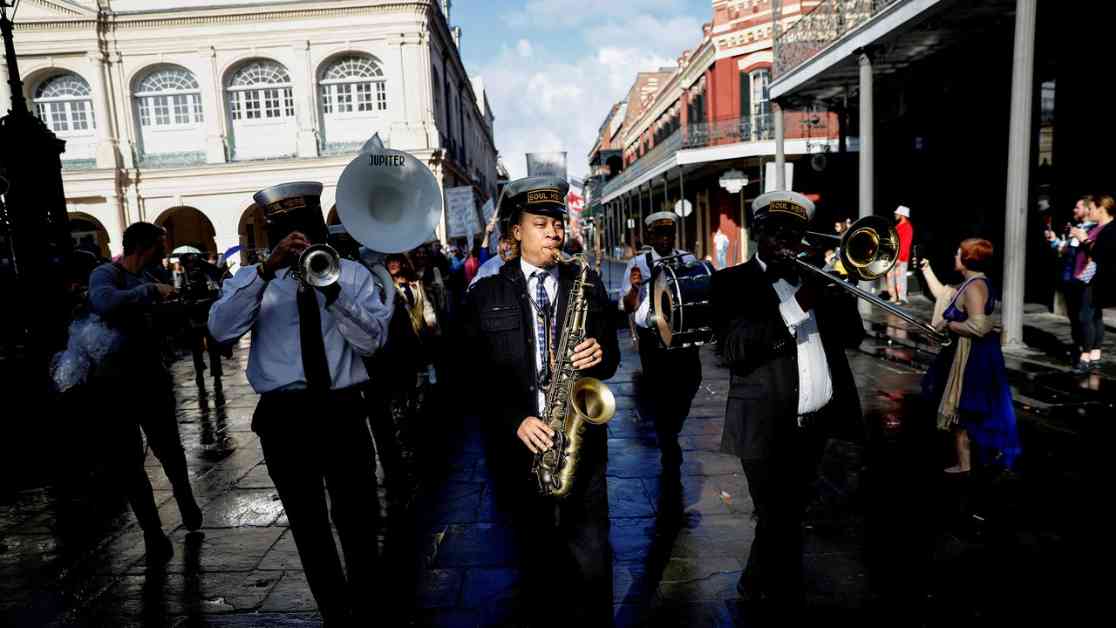New Orleans Party Scene: A Guide to the City’s Nightlife
To prepare for New Year’s Eve, the City of New Orleans sent a tanker truck marked “LEMON FRESH” to wet down the streets of the French Quarter, the oldest part of the city, which was founded in 1718, near where the Mississippi River meets the Gulf of Mexico. Men with circular scrubbers and power washers followed, sudsing the sidewalks of Bourbon Street, which runs for twelve blocks, from Canal Street to Esplanade Avenue. In “Bourbon Street: A History,” Richard Campanella writes that the corridor evolved from “a minor and rather middling artery” to “one of the most famous streets in the nation . . . a well-honed economic engine that employs thousands, pumps millions of outside dollars into the city’s economy, and single-handedly generates imagery and reputation about an entire metropolis.” Locals think of it as “a delectable mélange of historicity and hedonism”—or as “crass, phony, and offensive.”
Terror Strikes in the French Quarter
On New Year’s Day, a fifty-three-year-old Uber driver who introduced herself as Chanel told me, “Nobody who’s from here goes on Bourbon. I’ve been here all my life and I’ve probably been on Bourbon two times.” Hours earlier, at around three-fifteen in the morning, an American terrorist from Texas, under the banner of ISIS, had plowed down a bunch of pedestrians on Bourbon Street with a Ford F-150 electric pickup truck, crashed, and jumped out shooting. Fifteen people, including the attacker, were dead. The French Quarter was now closed off and glowing with the static blue lights of police vehicles. A perimeter had been established, manned by law-enforcement officers in uniform and in tactical gear. Bellhops for the various hotels on Bourbon had been helping guests navigate their roller luggage past yellow crime-scene tape.
Investigating the Terrorist’s Motives
The terrorist, a forty-two-year-old Army veteran whose name was Shamsud-Din Jabbar, had driven to New Orleans from the Houston area to carry out a plan that made use of a diabolically simple tool—an automobile—to kill a lot of people, horrifically, all at once. After the attack in Nice, New Orleans installed steel bollards that could be electronically raised and lowered around Bourbon Street, but the bollards were either in disrepair or were laxly used, according to Interfor International, a New York-based investigative and intelligence services company that prepared a security assessment for the French Quarter in 2019.
Unraveling the Plot
Jabbar set fire to the Airbnb, to destroy evidence, which included an explosive compound that reportedly had not yet been seen in I.E.D. configurations in the United States. John Miller, an ABC News correspondent turned F.B.I. and N.Y.P.D. counterterrorism official turned CNN security analyst, said that this did not necessarily indicate that someone had sent the materials to Jabbar or helped him. By Sunday, the F.B.I. revealed that the layered nature of Jabbar’s plot suggested advanced planning; investigators were unravelling details about recent trips that he’d made to Cairo and Canada, and said that Jabbar had visited New Orleans in October and November.
Personal Encounter: In the Midst of Tragedy
The confusion had been magnified when, later that morning, in Las Vegas, an active-duty member of the Green Berets, a special-forces unit of the Army, parked a Tesla Cybertruck loaded with fireworks and fuel cannisters at the entrance of a Trump hotel, then detonated the explosives. Before the blast, he shot himself in the head. He had rented his vehicle through the same contactless app, Turo, that the terrorist in New Orleans had used. The cabbie who had driven me from the airport dropped me off a block away from my hotel, on Royal Street, around the corner from the scene of the carnage, which Google Maps had marked with a red exclamation point and a note: “French Quarter incident.” The Quarter, which measures a little more than half a square mile, is a jumble of boutiques, galleries, restaurants, bars, bookstores, hotels, antique shops, voodoo artisans, beignet cafés, and Daiquiri dispensaries, and despite the police perimeter, business was open. It was New Year’s Day and Sugar Bowl day.
In the aftermath of the attack, Chanel, the Uber driver, shared her personal story and connection to one of the victims, highlighting the emotional toll of the tragedy. Her anxiety and fear resonated with many, showcasing the impact of such acts of terrorism on individuals and communities. Through her eyes, readers gained a deeper understanding of the human cost of violence, emphasizing the need for unity and resilience in the face of adversity.
As Perez and others reflected on the events that unfolded, they provided insights into the city’s vulnerabilities and strengths, shedding light on the complex dynamics at play in New Orleans. Despite the challenges and shortcomings exposed by the attack, there was a sense of resilience and determination among the residents to overcome and rebuild. The spirit of New Orleans, with its rich history and cultural vibrancy, stood as a testament to the enduring spirit of the city in the face of tragedy.












